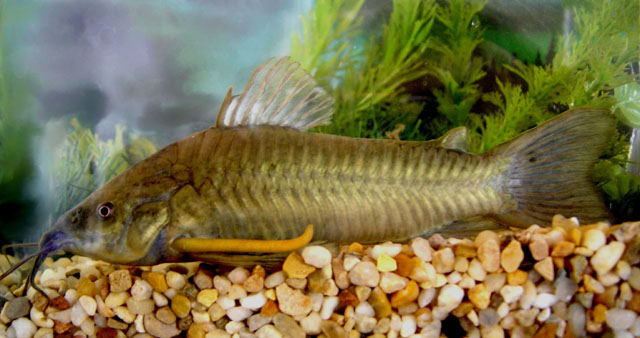| Callichthyidae (Callichthyid armored catfishes), subfamily: Callichthyinae |
| 26.3 cm TL (male/unsexed); max. reported age: 4 years |
|
demersal; freshwater; depth range - 1 m |
| South America: Most Cis-Andean South American river drainages north of Buenos Aires, Argentina (Ref. 37395). Introduced in the USA (Ref. 104645). |
|
|
| Inhabits swamps (Ref. 11225). During the rainy season, adults consume a great quantity of chironomids associated with detritus. During the dry season, they feed mostly on terrestrial insects, micro-crustaceans, aquatic Diptera, and detritus. Absorbs a great quantity of anaerobic bacteria from the substrate (Ref. 27188). First reproduction occurs after one year (Ref. 35381). Used to be cultured commercially in Guyana (Ref. 7306). Cultured in Trinidad on a semi-commercial scale (Ref. 11225). |
|
Least Concern (LC); Date assessed: 15 October 2020 Ref. (130435)
|
| harmless |
|
Recorded from near Paramaribo (Ref. 26144). Research on ecology and breeding in captivity being done by University of Suriname. N.V. Cammewijne Shrimp Fish Culture Co. (COMFISH) collect eggs from wild and grow-out in 20 ponds of 0.5 ha each (Ref. 26042). This species is in danger of local extinction (Ref. 26554). Overfishing, human-induced habitat modifications and the introduction of the exotic Oreochromis mossambicus pose a serious threat to its survival (Ref. 26554). Also Ref. 37395. |
Source and more info: www.fishbase.org. For personal, classroom, and other internal use only. Not for publication.

